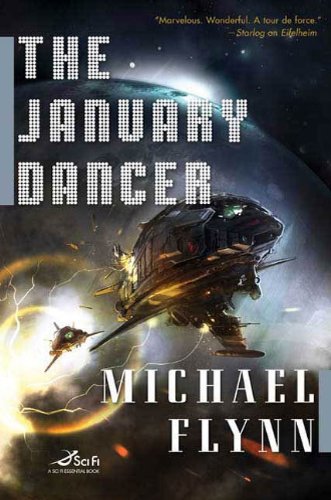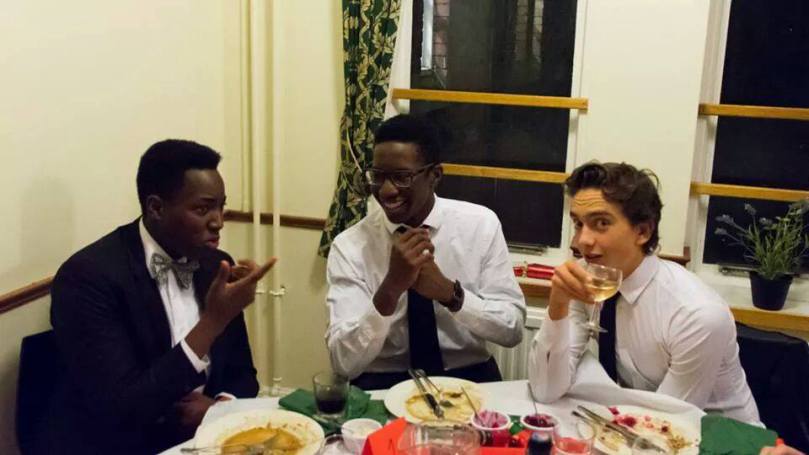Before I’d even opened this book I’d fallen in love with the title: it’s just so evocative of dark winter evenings curled up under a blanket with a creepy book, and I couldn’t wait to grab a cup of hot chocolate and get stuck in. I wasn’t disappointed – you’d be hard pushed to find a better January read.
It’s a collection of short stories, a literary form of which I have to confess I’m not always a fan, but these are all long enough to be immensely satisfying; in fact, they’re almost long enough to be novellas rather than short stories. It’d be misleading as well to refer to them simply as ghost stories since they’re much more complicated than that. There are elements that could feasibly be supernatural but there’s a psychological aspect to all of them as well. All three feature central characters who are at an emotionally tumultuous time in their lives and who find themselves in an environment that lends itself to paranoia, fear or a sense of isolation.
The first, “Broken Voices”, takes place in the early twentieth century and has the most conventionally “gothic” setting of the three: the house of an old schoolmaster that stands in the shadow of an imposing, eerie cathedral. The schoolmaster is tasked with looking after two lonely boys from the cathedral boarding school who have no home or family to go to during the Christmas holiday; at first, none of the three are particularly keen on the arrangement, but after an evening of ghost stories by the fire the boys’ interest in their previously uninviting surroundings is piqued. What is the truth about the demise of the unfortunate Mr. Goldsworthy, Master of Music at the cathedral, who fell to his death from the tower nearly two hundred years before -was it really an accident or was there a more sinister explanation? And is there a connection between his tragic end and the shadowy figure and untraceable music that can be seen and heard within the cathedral walls?
I loved the traditional feel of this first story; it fulfils every obligation of a good ghost story, and there’s an element of comfort in revisiting the familiar ground of what you would consider the epitome of the spooky story to be. Reading it was akin to putting on a pair of fluffy slippers and I was completely delighted by it. You get the feeling that the author really relished following in the footsteps of Charles Dickens, Wilkie Collins and other such writers, and I would put money on the fact that Andrew Taylor has a genuine love for those writers who paved the way for this kind of story.
With the second tale, however, he changes tack completely. We’re now back in the modern day and in the company of a man whose car has broken down as he drives home from his sister’s funeral. He’s lost, alone and with no means of calling for help – but as luck would have it, he stumbles across an old cottage. The enigmatic woman who answers the door directs him to a large, comfortable and welcoming house just a few minutes away, but try as he might he can’t get the woman out of his mind. When he returns in the morning, however, he gets the shock of his life, and what follows throws everything we thought we knew completely out of the window. It’s almost impossible to talk any more about the story itself without giving away a whole load of spoilers, so I’m not going to. What I can say, though, is that I loved the way this tale suddenly spun off into head-messing territory. Are we in the presence of some serious supernatural shenanigans or are we witnessing a grief-stricken man in the grip of psychological distress? I got to the end and my mind was still reeling, but that’s exactly the way it should be. If the first story was cosily creepy, this one was the total opposite: complex and quite unsettling.
The third and final story, “The Scratch”, was a very different one again. Gerald and Clare live in the idyllic Forest of Dean, a comfortable life in a beautiful house. Then Gerald’s nephew Jack comes into their life and everything begins to change. Jack is ex-military and is suffering from post-traumatic stress as a result of a horrifying experience he endured while on active service in the Middle East. He has a curiously intense fear of the couple’s cat but also and unhealthy obsession with the idea that a giant, wild, cat-like creature is on the prowl in the forest. And he has something else too: a bizarre scratch that never heals. As it turns out, Jack isn’t the only one with an obsession. Clare finds, to her horror, that she’s becoming increasingly attracted to the young man, and from this moment on things go from bad to worse for the family. It seems that post-traumatic stress isn’t all that Jack has brought back with him; as events unfold it starts to look suspiciously like some kind of curse.
But, the author challenges us, do we really believe in things like that? Is it possible that something otherworldly can exact revenge upon us for our transgressions or is it the burden of our own feelings of guilt that make us believe that the past is somehow haunting us? I thought this story was very clever as it manages to create an unsettling mood without any of the usual ghost story tropes. There are no gothic cathedrals and no dark, stormy nights, just warm spring days in the Forest of Dean, but it’s incredibly effective storytelling nonetheless.
The whole book was pitched just the right side of spooky for me. It won’t give you sleepless nights (thank goodness!) but it will give you something much more rewarding: cleverly crafted, stylishly written tales that create a gently spine-tingling atmosphere and much to think about.







